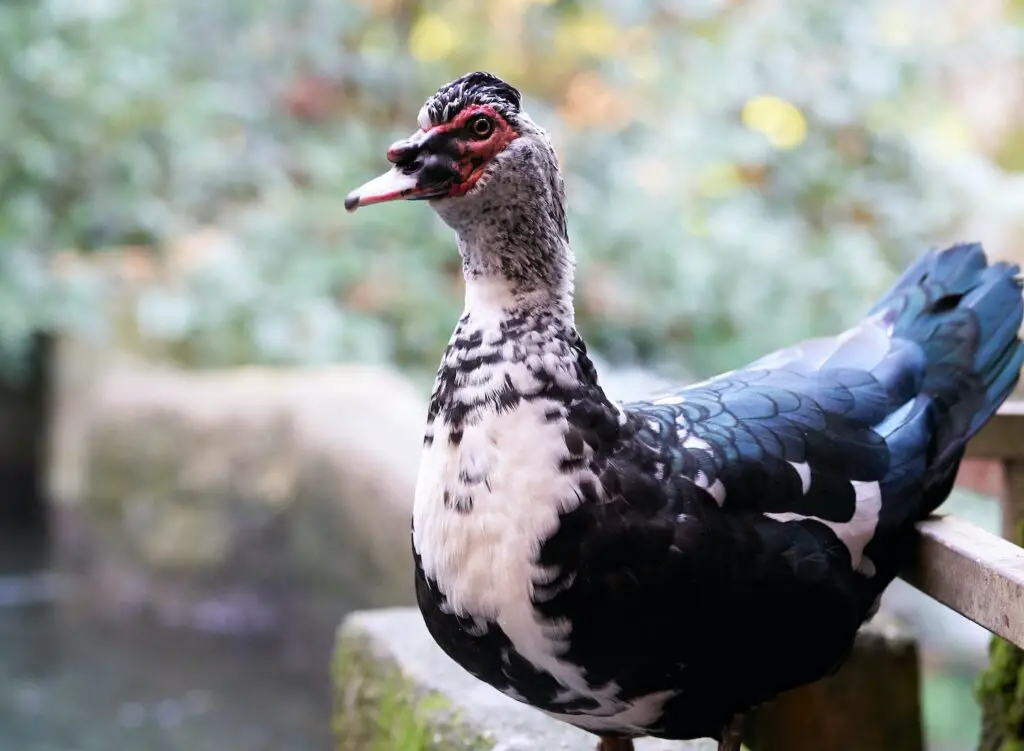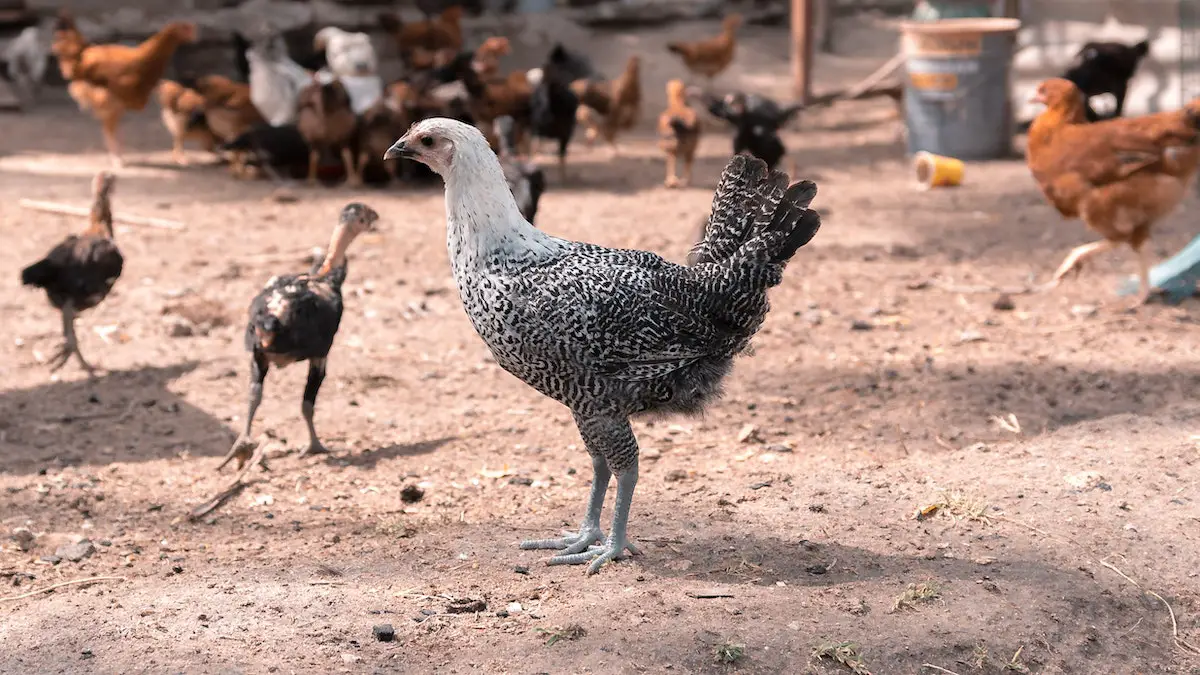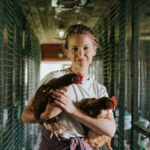Some links on this page may contain affiliate links which means that, if you choose to make a purchase using the link, Agricfy.com may earn a small commission at no extra cost to you. For more information, go to our Affiliate Disclosure Page!
Introduction
Chicken is a type of poultry bird raised for its economic importance and value to man. A chicken can be reared for both eggs and meat purposes.
Chicken farming is one aspect of poultry farming that anyone can go into without stress but if you don’t know the right steps to take in starting this farm, you can get it wrong. There are basic requirements to starting this farm which you can out in this article on how to start poultry farming.
A lot of people want to raise chickens but don’t want to have only chickens on their farm and are wondering what other animals can they raise with chickens on their farm. Well, in this article I will be talking about 4 animals you can raise with chickens.
Before I proceed to discuss the animals, let me tell you about 3 different chicken production aspects which are:
1. Breeder farm: They specialize in the production of fertile eggs for the purpose of hatching. They have both adult male and female birds in recommended ratios for natural mating.
2. Broiler production: This branch specializes in the production of table birds.
They obtain day-old broiler chicks and feed them intensively for five to eight weeks after which the birds are slaughtered for the meat. The number of weeks needed to raise broilers will depend on the weight of the bird as dictated by the prospective market.
3. Layer production (egg production): This branch specializes in the production of eggs. They collect day-old pullets and raise them as replacement stock or obtain point-of-lay birds from reputable grow-out farms.
If you want to focus on chicken farming, you can choose any of the branches mentioned above. If you are confused about the branch of production to choose, you can check the article I wrote comparing broilers and layers of chicken production.
Animals You Can Raise With Chickens
Turkey

The turkey is a native of tropical America and was domesticated from the wild turkey which can still be found in the wild in The United States today.
In the past, turkey production was limited to special Christmas requirements. Real commercial production is more recent, the commercialization process involved several changes. First, was the production of white plumage instead of the original bronze turkey that was the favorite.
Secondly, natural mating has given way to artificial breeding in Nigeria. Turkey is now marketed in two categories, namely broilers, and heavies. The commonest breeds of turkey are:
a. Belvile white: They are mostly turkey broiler, marketed at 10 to 14 weeks of age, and dress at 4 to 5kg.
b. Nicholas: This is the most popular breed today. They are white feathered and of medium weight (9-12 kg). They are the most efficient in terms of feed utilization.
c. Diamond white: They have creamy white feathers. This breed of turkey is the heaviest, averaging about 14 kg during the market period.
Rearing
The objective of rearing is to produce birds that are physically and physiologically ready for egg production at sexual maturity. Rearing involves the management of height and weight.
When raising turkeys, the birds are fed diets with 16% protein and a light schedule up to 30 weeks of age which has no effect on maturity and subsequent egg production.
However, the lighting program between 20 and 32 weeks of age has significant effects.
The rearing period of turkeys is between 14 to 30 weeks.
Management Period
The management of adult birds is similar to that of chickens except that turkey hens are rarely kept for commercial egg production; instead, adult birds are kept for the purpose of producing hatchable eggs.
Therefore, turkeys are rarely kept in cages instead, they are kept in deep litter with nests.
The management period for turkeys is withing 30 – 56 weeks
Duck

There are several breeds of ducks, namely,
a. White Peking: these are hardy and do not fly, they have good meat quality with an eviscerated weight of 2 – 3 kg at eight weeks of age. they must be processed at eight weeks of age to reduce the number of pin feathers. They are good layers producing up to 120 eggs a year but are poor sitters.
b. Roumen: they are large ducks averaging 4 – 5 kg in weight. They are docile, poor layers with low fertility and they are mostly kept for ornamental purposes but are also suitable for meat production. They lay about 90 greenish eggs per year.
c. Muscovy: This is the commonest breed in Africa, especially in Nigeria. They can fly but are voiceless and they have caruncles or warty masks on their face. There is sexual differentiation in weight as females average about 2.8 kg while males weigh 4.5 – 5.5 kg.
They are usually marketed at about 4 months of age.
Geese

They are bigger than ducks. The common breeds are:
a. Embedem: this originated from Germany. adult birds weigh about 9kg and dress at about 6.5 kg. they lay about 40 eggs per season, characterized by the presence of a heavy coat of downs. thus, the feathers are used as stuffing for pillows and cushions
b. Chinese: these are the best geese layers, averaging 80 to 90 eggs per season. they are good sitters that are very sensitive to disturbances and will easily bite, they are good foragers and dress at about 4.5 kg.
Rearing
Rearing can be undertaken outdoors as geese will tolerate temperatures as low as 00C. Rearing involves feed restriction to about 75% of the ad libitum intake or approximately 180h per bird day of diets with 15 -16% protein.
This has been shown to retard sexual maturity, increased egg production during the laying season, and reduced feed costs. When reared extensively or semi-intensively, feed restriction is usually not necessary.
Management
At six months of age, birds are introduced to breeder diets, which contain 16 – 18% protein. Nests are provided at the rate of 1 for 5 birds.
The sex ratio is 1 male: 5 females. A floor space allowance of 0.2 – 0.3m square per bird is sufficient. it is preferable to keep the birds confined until after peak production. It is necessary to collect eggs very early in the morning (8: 00 am) as some geese have been shown to lay their eggs as early as 5:00 am.
When confined, a photoperiod of 14 hours per day is necessary for production, fertility of geese eggs are about 85% while hatchability is about 70%.
Note: the management and rearing of geese and ducks are similar
Rabbit

A rabbit is an animal with a small body because of its small size. A rabbit requires housing that can be made from cheap local metal or wood and a chicken require a small housing.
Chickens enjoy watching rabbits run around and this prevents boredom for them. Rabbits can attain a body weight of 2kg between 8-10 weeks which is almost the same as the growth of chickens.
Breeds of Rabbit
- Alaska: It is a native of Belgium and the adult weight range from 3.07 -4.17kg. It is exclusively black, stocky, and compact in nature. It is an excellent dual-purpose breed.
- Angora: It is bred purposely for its wool. It is the only breed of a rabbit whose wool can be used for spinning. The adult weight is approximately 2.7kg. The colors vary but mostly white or albino.
- Flemish: It is the largest breed in the world (flemish giant). The bulk should not be less than 5.5 kg. A specimen of 9.4kg has been exhibited. The color is light grey or sandy blue.
Management
There are several decisions to be taken in managing breeding stock, they include:
- Breed of rabbit to be bred: Any breed could be used taking into consideration the desired production attribute
- When to breed junior doe: A doe can be bred between 4-6 months and it achieves 75 – 80% of its actual weight. However, none of this is as good as breeding by the color of the vulva.
- Remating interval: Wild rabbits can be bred after 48 hours of birth. The same can be applied in domestic but it is not applicable.
I have a comprehensive article on rabbit farming and if you want to start a rabbit farm, you can out the article HERE
Conclusion
Turkey, duck, geese, and rabbits are some of the animals which can be reared with chicken.
In considering animals to be reared with chickens, some features which are considered in their upbringing need to be checked, some of which are: the incubation period, brooding period, rearing period, feeding, breeding, management, and diseases.
Chickens are sensitive animals that need extra care and monitoring, the housing, lighting, and a lot more affect their growth so animals to be raised with them need to be animals that can adapt to their features and actions.
To recap, if you’re thinking of raising other animals with your chickens, below are 4 animals you can raise with chickens without stress:
- Turkey
- Duck
- Geese
- Rabbit
Any of the animals you go with, you can never go wrong with raising them with your chickens.







